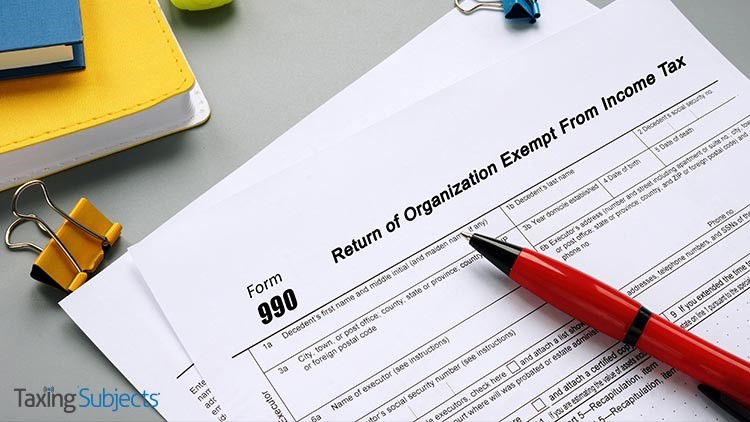by Socheata Ten EA, LLC | May 18, 2021 | Tax Tips and News
Some individual taxpayers and businesses in certain Tennessee counties have gotten some good news for a change: They have until August 2 to file their various tax returns with the IRS.
These taxpayers have had their share of bad news lately, mostly due to spring storms, flooding and tornadoes that ravaged the state on March 25 and again on April 3.
Who gets relief?
The Internal Revenue Service granted the relief package based on the counties that have been declared federal disaster areas in Tennessee by the Federal Emergency Management Agency (FEMA). This makes the relief benefits available to individuals and businesses with addresses on record in the following counties:
- Campbell
- Cannon
- Cheatham
- Claiborne
- Clay
- Davidson
- Decatur
- Fentress
- Grainger
- Hardeman
- Henderson
- Hickman
- Jackson
- Madison
- Maury
- McNairy
- Moore
- Overton
- Scott
- Smith
- Wayne
- Williamson
- Wilson
This list may expand over time, as new counties and communities are declared federal disaster areas. For a current list of eligible locations, check out the disaster relief page on IRS.gov.
What’s included?
The relief package takes various tax filing and payment deadlines that would have occurred any time since March 25 and pushes them back, giving affected individuals and businesses until August 2 to file their taxes and pay any tax due.
Deadlines that fall under the postponement include 2020 individual income tax returns normally due May 17, various 2020 business returns normally due April 15, and the deadline for 2020 IRA contributions.
Also delayed: quarterly estimated income tax payments due April 15 and June 15, quarterly payroll and excise tax returns due on April 30, and tax-exempt calendar-year returns normally due May 17.
The IRS says it will abate any penalties on payroll and excise tax deposits due on or after March 25 and before April 9, as long as the deposits are made by April 9.
Remember, relief measures are granted automatically; there’s no need to contact the IRS to apply. Whenever an affected taxpayer files, the IRS checks the address of record during processing and applies the relief.
Those who live outside a disaster area but have records needed for filing located within the disaster area should call the IRS at 866.562.5227. Workers helping with disaster relief efforts in the affected counties who are affiliated with a recognized government or philanthropic organization should also call the number.
The tax relief covers six states
The relief measures for Tennessee counties is the latest package set in motion by the IRS. It joins previously announced measures in five other southern states:
- Individuals and businesses in Texas, Oklahoma, and Louisiana have until June 15 to file and pay. All taxpayers in these three states qualify for relief.
- Individuals and businesses in parts of Kentucky have until June 30 to file and pay.
- Individuals and businesses in parts of Alabama have until August 2 to file and pay.
Filers, whether individual taxpayers or businesses, have the option to claim their uninsured or unreimbursed disaster losses either on the return for the year the loss occurred (such as the 2021 return to be filed next year), or the return for the prior year.
For any return that claims a loss, write the FEMA disaster declaration number – in this case, 4601DR – on the return before it’s filed. Publication 547 has more information on the process.
If affected taxpayers in the disaster areas need an extra extension beyond the relief given, they can submit a request for an automatic extension, pushing their filing deadline back to October 15. The IRS reminds, however, that an additional extension applies only to filing; payment will be due on the date specified in the relief measures.
Source: IRS extends May 17, other tax deadlines for victims of Tennessee storms
– Story provided by TaxingSubjects.com
by Socheata Ten EA, LLC | May 15, 2021 | Tax Tips and News
With restaurants beginning to open more fully due to a break in the coronavirus pandemic, employees in the food and beverage industry are soon likely to have a lot more to report on their taxes: Tips.
That’s why the Internal Revenue Service is reminding taxpayers that that tips should be included in gross income when filing their tax return ahead of the May 17 deadline. The agency identifies three specific examples:
- Tips directly from customers.
- Tips added using credit cards.
- Tips from a tip-splitting arrangement with other employees.
Reporting, however, doesn’t stop there. Tips that are made with something other than cash—tickets or free passes for example—have value and, as such, must be included in income.
The Big 3 for tipped employees
If a worker regularly gets tips, there are three things the IRS expects them to do. All are aimed at keeping track and reporting tip income to the IRS.
Write it Down – The first thing employees should do is keep a daily record of their tips. One way to do that is to use Form 4070A, Employee’s Daily record of Tips, which is included in Publication 1244.
Besides the information on the Form 4070A, workers need to keep a record of any non-cash tips they get, including the date and value of the non-cash tip. Remember that a non-cash tip can be any item of value that’s offered as a tip.
While non-cash tips don’t have to be reported to the employer, they do have to be reported to the IRS.
Report Tips to the Employer – All cash tips a worker receives in any month have to be reported to the employer; they’re subject to Social Security and Medicare taxes. If the employee has less than $20 in tips for the month and a single employer, the tips don’t have to be reported and no taxes have to be withheld.
Employees have to notify their employer of their cash tips (which include those made on credit card statements) in writing. No particular form has to be used, but the report has to include some standard information:
- Employee signature,
- Employee’s name, address, and social security number,
- Employer’s name and address (establishment name if different),
- Month or period the report covers, and
- Total of tips received during the month or period.
The IRS says both directly tipped employees and those who are tipped indirectly must report tips to their employer.
To find out if tip income is taxable, visit the Interactive Tax Assistant on the IRS website.
Other resources include Tip Record-Keeping and Reporting; Publication 1244, Employee’s Daily Record of Tips and Report to Employer; and Publication 531, Reporting Tip Income.
Sources: Here’s what taxpayers need to know about reporting tip income on their tax return; Tip Recordkeeping & Reporting
– Story provided by TaxingSubjects.com
by Socheata Ten EA, LLC | May 14, 2021 | Tax Tips and News
If you live in the Southeast, long lines and questionable containers are a sad reality at many local gas stations. The temporary Colonial Pipeline disruption caused a rush on fuel this week, leading many in the region to hoard gasoline.
Luckily, our post-apocalyptic future will have to wait.
In addition to the pipeline resuming operations, the IRS today announced that—from May 7 to May 21—they will provide relief for the dyed diesel fuel penalty. The relief applies if the fuel “is sold for use or used on the highway” and someone (whether the seller or vehicle operator) pays the motor fuel excise tax for diesel (24.4 cents per gallon).
The IRS explains that “ordinarily, dyed diesel fuel is not taxed, because it is sold for uses exempt from excise tax, such as to farmers for farming purposes, for home heating use, and to local governments.” And the penalty for non-approved use is the greater of $10 per gallon or $1,000 plus the excise fuel tax.
Further, the agency notes that it “will not impose penalties for failure to make semimonthly deposits of this tax,” pointing taxpayers to Publication 510, Excise Taxes, for more information.
Which states get the dyed diesel fuel penalty relief?
The IRS says that, currently, twelve states and the District of Columbia will benefit from the retroactive dyed diesel fuel penalty relief, including:
- Alabama
- Delaware
- Georgia
- Florida
- Louisiana
- Maryland
- Mississippi
- North Carolina
- Pennsylvania
- South Carolina
- Tennessee
- Virginia
Finally, the IRS says it “is closely monitoring the situation and will provide additional relief as needed.”
Source: IR-2021-108
– Story provided by TaxingSubjects.com
by Socheata Ten EA, LLC | May 13, 2021 | Tax Tips and News
Most Americans think that when it comes to paying income tax, Social Security benefits are off-limits. And in most cases, that may be true, but add a little income on the side, and those non-taxable benefits can shift onto the taxable side of the spreadsheet.
Social Security benefits include monthly retirement payments, as well as survivor and disability benefits. Supplemental security income payments (SSI), however, are not taxable—so they’re not included.
So, what’s taxable and what’s not? That depends on the income and filing status of the taxpayer.
Publication 915, Social Security and Equivalent Railroad Retirement Benefits, sums it up this way:
“If the only income you received during 2020 was your Social Security or the SSEB portion of tier 1 railroad retirement benefits, your benefits generally aren’t taxable and you probably don’t have to file a return. If you have income in addition to your benefits, you may have to file a return even if none of your benefits are taxable.”
That’s an oversimplification, of course. In order to know if benefits are taxable, taxpayers should take half of their Social Security benefits for the year and add it to any other income they had.
“Other income” includes wages, pensions, interest, dividends, and capital gains.
If the total is more than $25,000 and the taxpayer is single, part of their Social Security benefits may be taxable.
Taxpayers who are married and file jointly should take half of their Social Security – and half of their spouse’s Social Security – and add the two amounts to their other income. If the total exceeds $32,000, then a part of their Social Security benefits may be taxable.
When making the comparison, Publication 915 says taxpayers shouldn’t reduce their other income by any exclusions for interest from qualified U.S. savings bonds, employer-provided adoption benefits, interest on education loans, foreign earned income or foreign housing, or income earned by bona fide residents of American Samoa or Puerto Rico.
Some could owe tax on a larger percentage of their Social Security benefits
Generally, up to half of a taxpayer’s Social Security benefits could be considered taxable if the taxpayer is:
- Filing single, head of household, or qualifying widow or widower with $25,000 to $34,000 income.
- Married filing separately and lived apart from their spouse for all of 2020 with $25,000 to $34,000 income.
- Married filing jointly with $32,000 to $44,000 income.
However, taxpayers who fit the following situations could have as much as 85% of their Social Security benefits considered taxable:
- Filing single, head of household, or qualifying widow or widower with more than $34,000 income.
- Married filing jointly with more than $44,000 income.
- Married filing separately and lived apart from their spouse for all of 2020 with more than $34,000 income.
- Married filing separately and lived with their spouse at any time during 2020.
Publication 915 says some U.S. citizens living abroad are exempt from American income tax on their benefits, but only if they live in these countries:
- Canada
- Egypt
- Germany
- Ireland
- Israel
- Italy (You must also be a citizen of Italy for the exemption to apply)
- Romania
- United Kingdom
The IRS website, IRS.gov, has an Interactive Tax Assistant that can help answer the question Are my Social Security or Railroad Retirement Tier 1 Benefits Taxable?
Sources: IRS Tax Tip 2021-66; Publication 915: Social Security and Equivalent Railroad Retirement Benefits.
– Story provided by TaxingSubjects.com
by Socheata Ten EA, LLC | May 12, 2021 | Tax Tips and News
As you might have experienced first-hand, those with unused funds from a 2020 dependent care assistance program (DCAP) could have questions about newly allowed carryovers and whether those funds are taxable. Well, the Internal Revenue Service this week issued Notice 2021-26 to clear things up.
How did the pandemic affect dependent care assistance program funds?
The coronavirus pandemic has left a lot of taxpayers unable to use some of the money they set aside for DCAPs in 2020 and 2021 and this latest guidance seems aimed at fixing the problem.
Usually, carryovers of DCAP amounts aren’t permitted. In 2020, though, national legislation was passed allowing employers to tweak their DCAP plans so that carryover of unused program amounts are now allowed in 2021 and 2022. In addition, the law allowed employers to extend the period in which claims can be incurred to the plan years over that same 2021-2022 time frame.
Notice 2021-26 also says carryover amounts actually used for dependent expenses during the extended claims period would be excluded from income:
“Consequently, this notice clarifies that DCAP benefits that would have been excluded from income if used during the taxable year ending in 2020 or 2021, as applicable, remain eligible for exclusion from the participant’s gross income and are disregarded for purposes of application of the limits for the subsequent taxable years of the employee when they are carried over from a plan year ending in 2020 or 2021 or permitted to be used pursuant to an extended claims period.”
Does the IRS have additional guidance?
The American Rescue Plan Act raised the exclusion of employer-provided dependent care benefits to $10,500 from its original $5,000. Notice 2021-26 has a number of examples of how this new exclusion limit can work with the new guidance in real-world situations.
In February, Notice 2021-15 explained that if an employer embraced a carryover or extended claims period, annual limits for DCAP amounts apply to the money that is contributed, not to the amounts that are reimbursed or available in a plan or a calendar year.
This earlier guidance meant that DCAP participants can continue to contribute the maximum amounts to their plans through 2022.
For more on Coronavirus-related tax relief, visit IRS.gov.
Source: IR-2021-105
– Story provided by TaxingSubjects.com
by Socheata Ten EA, LLC | May 11, 2021 | Tax Tips and News
The Internal Revenue Service is reminding some tax-exempt organizations that they face the same May 17 filing deadline as regular income tax filers.
The IRS says that the May 17 date applies to “tax-exempt groups that operate on a calendar-year (CY) basis” and file any of these returns:
- Form 990-series annual information returns (Forms 990, 990-EZ, 990-PF, 990-BL)
- Form 990-N, Electronic Notice (e-Postcard) for Tax-Exempt Organizations Not Required to File Form 990 or Form 990-EZ
- Form 990-T, Exempt Organization Business Income Tax Return (other than some trusts)
- Form 4720, Return of Certain Excise Taxes Under Chapters 41 and 42 of the Internal Revenue Code
As for how the forms need to be filed, the agency notes that “organizations filing a Form 990, 990-PF or 990-N for CY2020 must file their returns electronically,” while “organizations filing Form 990-EZ for CY2020 received transitional relief and may file electronically or in paper.”
The IRS says these tax-exempt organizations should file now if they haven’t already done so. Luckily, the agency has put together a series of pre-recorded online workshops that can help these groups meet their filing requirements.
What if a tax-exempt organization needs an extension?
If a tax-exempt group needs more time to file its information return, they can request an automatic extension with Form 8868, Application of Time to File an Exempt Organization Return.
Form 8868 gives the organization a six-month extension on filing. If any tax is due, however, it’s still due on May 17—just as is the case with individual returns.
And while Form 8868 can be filed electronically or on paper, the IRS encourages those who seek an extension to file electronically for fastest processing.
What happens if a tax-exempt organization doesn’t file?
While filing most of the 990-series forms is straightforward, the decision not to file has its downside. Tax-exempt groups failing to file their Form 990 series for three straight years automatically lose their tax-exempt status.
The IRS says it’s still experiencing delays in processing paper forms, so it’s asking tax-exempt filers to send in their 990-EZ electronically. This will speed up transmission—and could help the group to avoid auto-revocation if they didn’t file returns for calendar years 2018 and 2019.
When an organization has its tax-exempt status auto-revoked, a notice is sent alerting the group of the change in status, and the group is placed on a list of status-revoked organizations. The list is available to taxpayers through the IRS website. It allows users to search the list by name or other parameters and is updated after the deadline for each filing season.
The IRS is prohibited by law from reversing an auto-revocation that was done properly. However, there are procedures to help organizations who contend they were auto-revoked in error.
This would include conditions where the group was revoked, yet had documentation that its filing requirements had been previously met.
For example, let’s say a group is notified its tax-exempt status has been auto-revoked, but has the needed documentation showing it filed a paper Form 990-EZ or Form 8868 by the May 17 filing deadline, or had filed in at least one of the previous three years.
In this case, the organization can fax the documentation to the IRS at 855-247-6123 to get the issue resolved.
Sources: Reminder to tax-exempt organizations: 990s, other forms due on May 17; Search for Tax Exempt Organizations
– Story provided by TaxingSubjects.com







 Socheata Ten EA, LLC
Socheata Ten EA, LLC